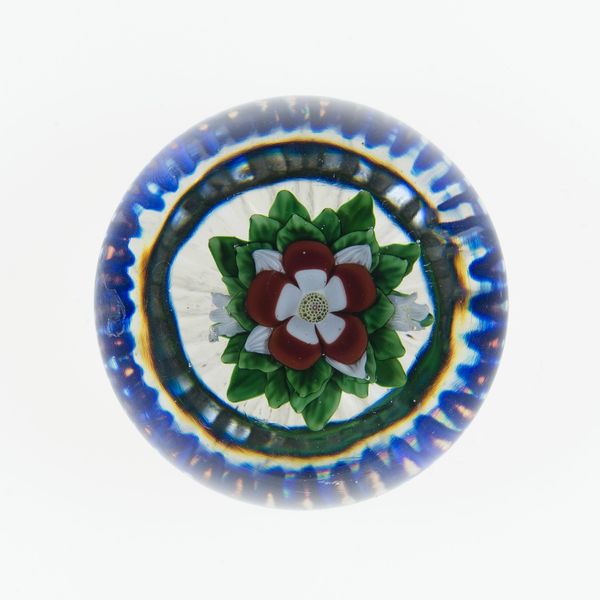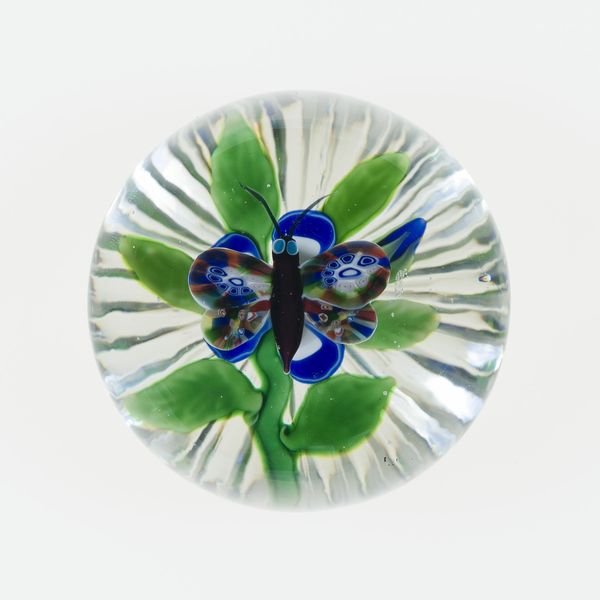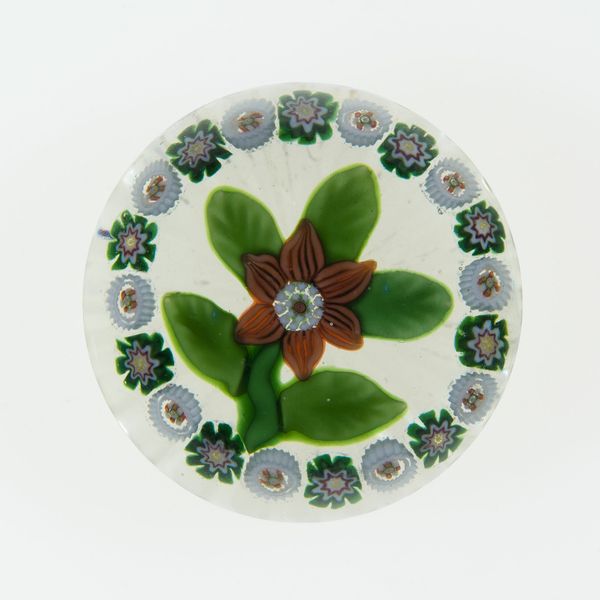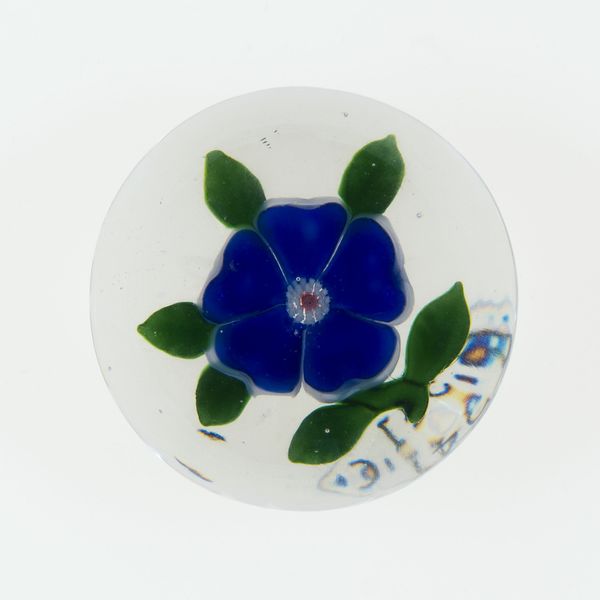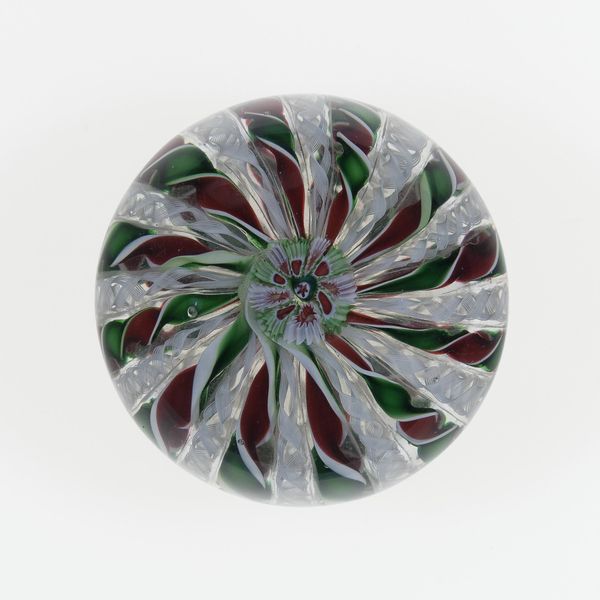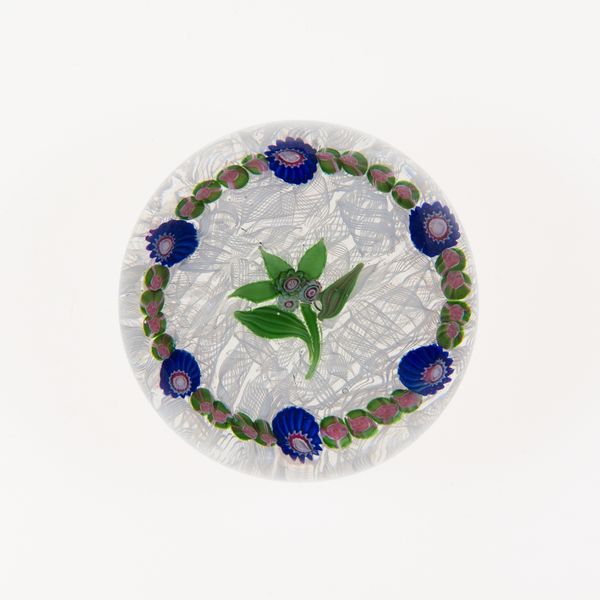
glass, sculpture
#
glass
#
sculpture
Dimensions: Diameter: 3 in.
Copyright: Public Domain
Curator: Welcome. Today, we’re looking at "Paperweight," a glass sculpture made by Compagnie de Saint Louis sometime between 1848 and 1855, currently residing at The Art Institute of Chicago. Editor: My first thought is of delicacy, an ephemeral moment perfectly preserved. There's something almost hauntingly beautiful about its miniature world held captive in glass. Curator: Yes, the visual impact is striking. Note how the spherical form acts as both container and lens, distorting and magnifying the meticulously arranged floral design. The interior arrangement employs strategies to create a dynamic interplay of light and form. Editor: Let’s not forget the material qualities of glass itself, how it is blown, manipulated and then cooled; the controlled fragility of that whole process, especially for an object meant to sit upon a desk and withstand the wear of everyday life. These paperweights were functional, but became symbols of craft in bourgeois life. Curator: I agree, the inherent tension between its practical function and refined craftsmanship generates intrigue. Consider also how the limited color palette--greens, browns, whites and a dash of cobalt blue--contribute to a unified yet subtly contrasted composition. Each color, each individual leaf and petal, plays a vital role in the overall aesthetic effect. Editor: What about the anonymous craftspeople? What can we say about the division of labour that was necessary to produce something this complex, this beautiful? Did these makers view it as art? Or labour? Curator: Fascinating point. Whether considered "art" or simply "production," these pieces reflect the broader cultural context of 19th century decorative arts and industrial manufacturing. The aesthetic complexity elevates what might otherwise be a purely functional object into something of considerable visual merit. Editor: Indeed. Examining it now, from our respective viewpoints, allows one to more appreciate the beauty that lies beneath its sleek, transparent surface. Curator: Absolutely. These crafted glass works from the past continue to teach us how aesthetic qualities transcend temporal boundaries.
Comments
No comments
Be the first to comment and join the conversation on the ultimate creative platform.
